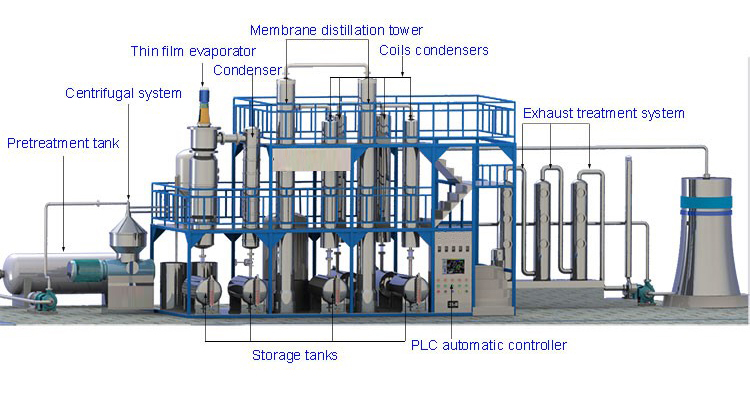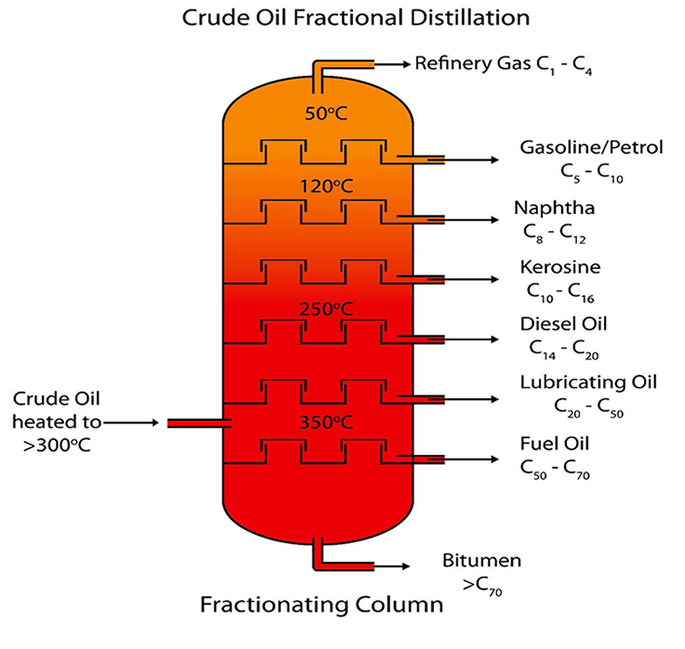
Generally used engine oil is mineral oil, which is a kind of product obtained by vacuum distillation of heavy fractions of petroleum. The so-called waste engine oil, one refers to the oil mixed with water, dust, other miscellaneous oil and metal powder and other impurities caused by the wear of the machine parts; the second is that the oil gradually deteriorates, resulting in organic acids, colloids and asphalt-like substances .
Identification of engine oil quality
- Identification method for water in engine oil
1, After the water leaks into the oil pan, the oil surface is obviously raised.
2, There is water in the oil, and the engine oil is diluted to be milky white with foam.
3, It is difficult to distinguish a small amount of water in the oil pan. You can run the engine for a few minutes first, and use the dipstick to drip the oil in the oil pan on the clean cotton wire, away from the oil tank, and ignite the cotton wire. Pure oil of good quality is easy to ignite, and when the engine oil with water ignites, it will make a sound of “zizi, baba”.
4, Identify the oil on the oil pan on a white paper. Engine oil with water quickly spreads on the paper, while pure engine oil does not spread.
- Identification method for impurities in engine oil
1, Repeat the grinding of the engine oil between the thumb and the index finger. The better engine oil feels that it has lubricity, less wear debris and no friction. If the finger has a greater sense of sand friction, it means that there are many impurities in the engine oil, and you can’t reuse them. You should replace the new engine oil.
2, Take a clean white filter paper and drop a few drops of oil on the filter paper. After the engine oil leaks, if there is black powder on the surface, touch the hand with a feeling of resistance, it means that there are many impurities in the engine oil; Good lubricants are powder-free; they are dry and smooth by hand, and have yellow marks.
3, When the identification oil mixed with fuel in the engine oil is mixed with a large amount of fuel, it can be judged according to whether the odor, the viscosity is lowered, and whether the oil level is increased; Take a few drops of oil from the human oil inspection vessel, heat it to the standard temperature, and see if it can be ignited.
Prevention of engine oil early deterioration
- Prevent the mixing of cooling water into the engine oil
1, To keep the crankcase well ventilated, remove the high temperature exhaust gas in time to avoid condensation of water vapor and mix it into the engine oil;
2, The cylinder head, cylinder head gasket and cylinder block joint surface should not leak water, the water blocking ring is properly assembled, no damage, and there should be no leakage between the cylinder liner and the cylinder block;
3, Be sure to drain the cooling water before disassembling the cylinder head to prevent it from flowing into the crankcase;
4, The locomotive parked in the open air must be sealed with the oil inlet and the oil dipstick to prevent rain from entering the crankcase.
- Preventing the mixing of gasoline and diesel into engine oil
1, Check and adjust the fuel injection pressure of the injector frequently to ensure that the fuel atomization is good, the combustion is normal, and the incomplete burning the gasoline and diesel oil is prevented from flowing into the crankcase along the cylinder wall;
2, Regularly check or adjust the fuel injection pump and fuel injector, and timely replace the overrunning plunger, oil outlet valve and injector needle valve to prevent the gasoline and diesel from leaking into the crankcase;
3, Prevent the engine from overheating and accelerate the oxidation of the engine oil.
- Do a good job of maintenance work
Change the oil regularly, replace the paper filter of the strainer and maintain the centrifugal oil filter. Some engine crankcases use open forced air to eliminate the exhaust gas from the combustion chamber to the crankcase in time. In the use, the crankcase ventilation pipe should be properly sealed and must not be blocked.
According to different seasons, different types of lubricating oils should be selected and replaced regularly according to the specified interval. At the end of the new vehicle, clean the engine crankcase, clean the oil filter rotor, replace the coarse filter, and replace the new oil.
The driver should check the oil before going out every day. Draw out the oil dipstick to observe the amount of oil and the color and quality of the oil.


